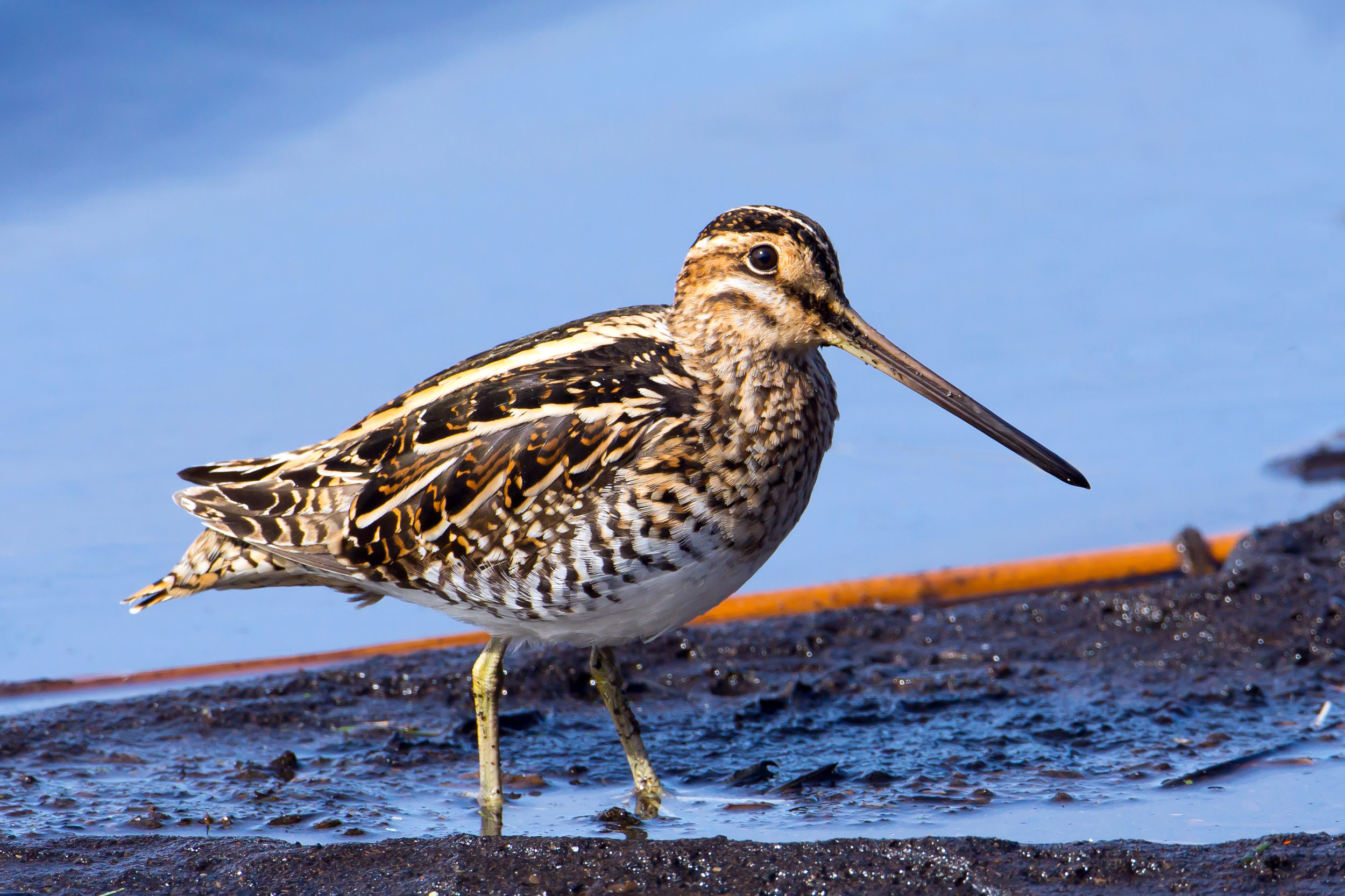The Surfbird (SURF) is about 10” long with a wingspan of 26” and weight of 7 oz. (190 g). The genus name Aphriza (ah-FREE-zah) is from the Greek, aphros, froth, sea foam, meaning “to live in sea foam”.
Wilson's Snipe
Red Knot
n spring the Red Knot stands out on tidal flats in its bright chestnut plumage on its face, chest and belly. It has black legs and a black bill that is about as long as the head is wide (Paulson). By late July it will have molted to gray with a white belly and it easily blends in with other shorebirds and the colors of sand and vegetation along shorelines.
Long-billled Curlew
Killdeer
Wandering Tattler
The genus name Heteroscelus (heh-teh-ROSS-keh-lus) is from the Greek heteros, meaning “other” or “different”, and skelos, for “leg” which alludes to legs of this species being different from other sandpipers. The tarsus is scutellated instead of reticulated at the back. “Scutellated” is when the bare skin of the tarsus is a horny skin cut up into overlapping scales like shingles on a roof.
Whimbrel
The genus name Numenius (new-MEAN-ih-us) is Latin from the Greek noumenios, of the new moon; curve of bill is likened to new crescent moon. The species name phaeopus (FEE-oh-pus) is from the Greek phaios, gray, and pous, foot, gray-foot. It was named Whimbrel in England from uttered note which sounded like whim. It is a member of the curlew family.
Wilson's Phalarope
Black Oystercatcher
Black Turnstone
Least Sandpiper
In the interior of North America the Least Sandpiper is the most common of the “peeps,” the small sandpipers in the genus Calidris. However, on the coast Least Sandpipers often associate with Western and Semipalmated Sandpipers and can be lost in their great numbers. Least Sandpipers generally travel in smaller flocks.
Pectoral Sandpiper
The Pectoral Sandpiper is uncommon in Western Washington but can usually be seen during fall migration. Adults begin passing through Washington in late July and juveniles show up from mid-August to late October. The juveniles will be in new plumage having completed their prejuvenile (or first prebasic) molt, which results in the change from downy feathers to their basic plumage.


















